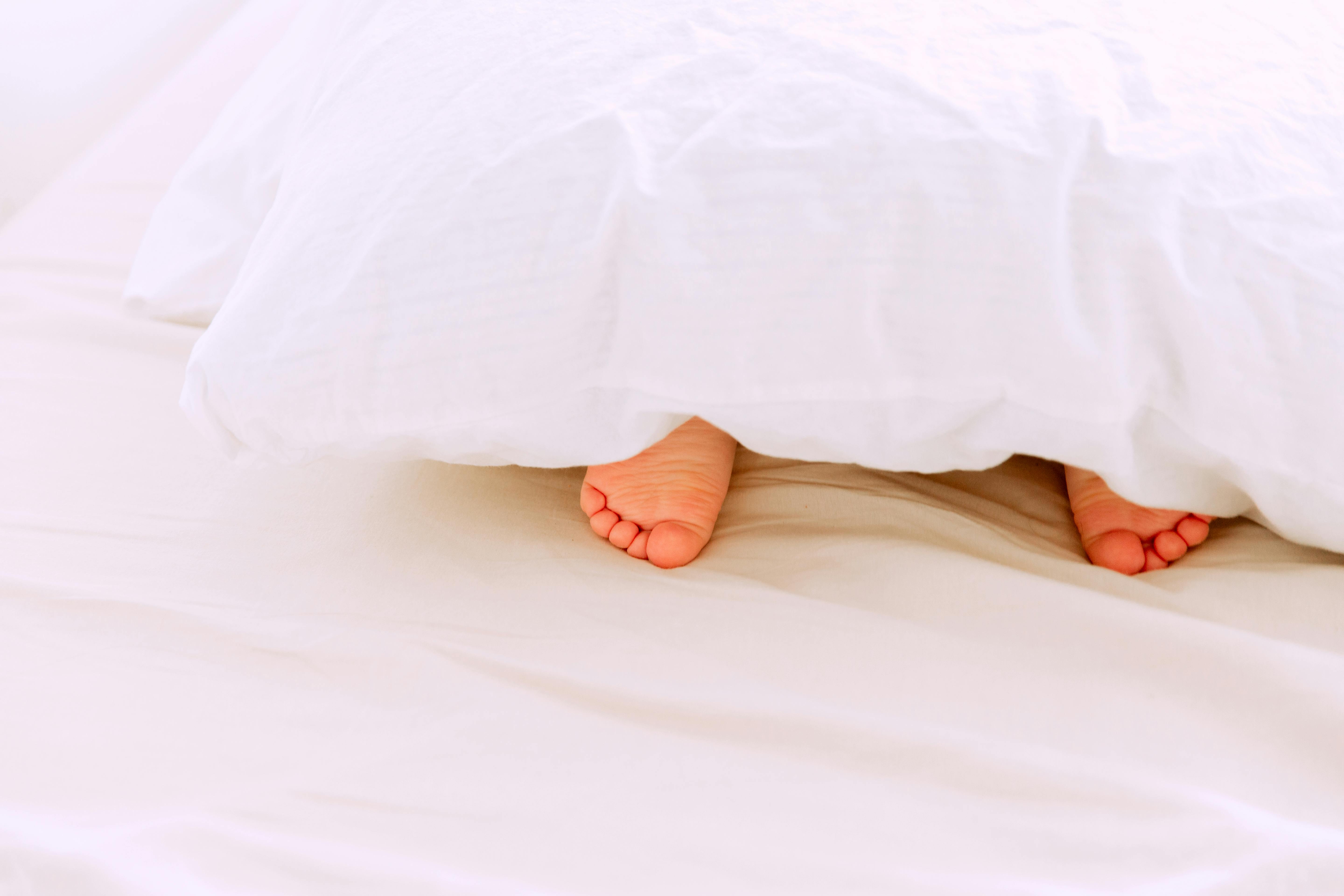Imagine a world where you can boost your energy levels and conquer the day with just a short nap. Sounds too good to be true? Well, think again! In the name of productivity and well-being, let’s explore the intriguing phenomenon of how those precious moments of shut-eye during the day can actually revitalize your energy levels. From improved focus to enhanced creativity, we’ll delve into the benefits of power naps and unravel the secrets behind their astonishing ability to rejuvenate your mind and body. So, sit back, relax, and get ready to discover the magic of brief midday snoozes!
Benefits of short naps
Short naps have a variety of benefits that can significantly impact your energy levels and overall well-being. Let’s explore some of these benefits:
Increased alertness
One of the primary benefits of taking a short nap is increased alertness. Have you ever experienced that mid-afternoon slump where your energy levels plummet, and it feels nearly impossible to stay focused? Taking a short nap can help combat this by giving your brain a chance to rest and rejuvenate. Even a quick power nap can make a world of difference, leaving you feeling more awake and alert for the remainder of the day.
Improved cognitive function
Not only does taking a short nap boost your alertness, but it also enhances cognitive function. Studies have shown that napping can improve memory, attention, and overall mental performance. By giving your brain a brief respite, you allow it to consolidate information and optimize its functioning. So if you’re working on a challenging task or need to stay sharp for an important meeting, a short nap can provide the mental boost you need to perform at your best.
Enhanced mood
Another wonderful benefit of short naps is their positive impact on mood. When you’re feeling tired, fatigued, or stressed, it’s natural for your mood to take a hit. However, taking a short nap can help improve your psychological well-being by reducing feelings of irritability and enhancing your overall mood. It’s like giving yourself a reset button, allowing you to approach the rest of the day with a more positive and optimistic mindset.
Boosted creativity
If you’re someone who relies on creative thinking or problem-solving in your work or personal life, short naps can be incredibly beneficial. Studies have shown that napping can enhance creative thinking and promote innovative ideas. During sleep, your brain continues to work on problems and make connections, even when you’re not consciously aware of it. By incorporating short naps into your routine, you may find yourself approaching challenges with fresh perspectives and coming up with creative solutions.
Ideal nap duration
While short naps are undoubtedly beneficial, the duration of your nap can affect how you feel afterwards. Let’s take a closer look at the ideal nap durations and their respective effects:
10-20 minutes
Known as power naps, short naps lasting 10-20 minutes provide a quick pick-me-up without leaving you feeling groggy or interfering with your nighttime sleep. These naps are perfect for boosting alertness and refreshing your mind during the day. They are particularly effective at combating that midday slump and can help you power through the rest of your tasks with renewed energy and focus.
30-60 minutes
Naps that fall within the 30-60 minute range can be beneficial for individuals who need a bit more rest but don’t want to experience sleep inertia, which is the groggy feeling you sometimes get upon waking from a longer nap. These naps allow for a deeper level of rest and can enhance cognitive function and creativity. However, be cautious with napping for longer than 30 minutes late in the day, as it may interfere with your ability to fall asleep at night.
90 minutes
A full sleep cycle typically lasts around 90 minutes, which means a nap lasting this duration allows you to go through all the stages of sleep, including Rapid Eye Movement (REM) sleep. Napping for 90 minutes can provide the benefits of a full night’s sleep, leaving you feeling restored and refreshed. However, it’s important to note that longer naps like this are not suitable for everyone, especially if you have trouble falling asleep or staying asleep at night.

Effects of longer naps
While there are benefits to longer naps, it’s crucial to be aware of the potential drawbacks that can impact your energy levels and overall productivity:
Sleep inertia
Sleep inertia refers to the groggy and disoriented feeling you may experience upon waking from a deep sleep. Longer naps have a higher likelihood of causing sleep inertia, especially if you are jolted awake from a deep stage of sleep. This can leave you feeling groggy and sluggish instead of refreshed and energized. To minimize the risk of sleep inertia, it’s best to limit longer naps and allow yourself ample time to wake up gradually.
Disrupted nighttime sleep
If you regularly take longer naps during the day, it can potentially interfere with your ability to fall asleep or stay asleep at night. Napping for an extended period too close to your usual bedtime can disturb your natural sleep cycle, making it challenging to get the restful sleep you need. It’s important to strike a balance between daytime napping and nighttime sleep to ensure your overall sleep quality remains optimal.
Decreased productivity
While taking a longer nap may seem tempting, especially when you’re feeling exhausted or overwhelmed, it’s important to consider its impact on productivity. Longer naps can lead to a loss of valuable time, especially if you have a busy schedule or pressing deadlines. Additionally, the grogginess that may accompany waking from a longer nap can make it more challenging to jump back into tasks and maintain focus. It’s essential to find a balance that allows you to recharge while still maintaining your productivity levels.
Factors influencing post-nap energy levels
Several factors can influence how you feel after taking a nap. Understanding these factors can help you optimize your energy levels and reap the most benefits from your naps:
Time of day
The time of day when you take a nap can significantly impact your post-nap energy levels. Generally, it is recommended to schedule naps for the mid-afternoon, around 2-3 PM, as this is when most people experience a natural dip in their circadian rhythm. Napping during this time can help combat fatigue and provide a much-needed energy boost to power through the rest of the day. However, individual preferences and schedules may vary, so it’s essential to find the timing that works best for you.
Sleep debt
Sleep debt refers to the accumulated sleep deficit that occurs when you consistently do not get enough sleep. If you’re sleep-deprived, even a short nap can have a significant impact on your energy levels and cognitive function. However, if you’re well-rested, a short nap may not be as necessary or have the same energizing effect. It’s important to listen to your body’s signals and adjust your napping routine accordingly based on your sleep debt.
Individual sleep needs
Each person has unique sleep needs, meaning that what works for someone else may not work for you. Some individuals may require more frequent and longer naps to maintain their energy levels, while others may find that shorter, strategic naps suffice. Consider your own energy patterns, sleep duration, and personal preferences when determining the ideal nap routine for yourself.

Napping techniques
When it comes to napping, different techniques can be employed to maximize their effectiveness. Let’s explore three popular techniques:
Planned napping
Planned napping involves scheduling your nap in advance, aligning it with the most suitable time and duration based on your needs. By planning your nap, you can ensure that you have the time and environment necessary to relax and recharge. This technique is particularly helpful if you have a consistent daily routine and can predict when you’re likely to experience a dip in energy.
Emergency napping
Emergency napping, also known as an “emergency power nap,” is the act of taking a nap when you are unexpectedly feeling excessively tired or fatigued. This technique is useful in situations where you need an immediate energy boost to remain alert and focused, such as during long drives or before important meetings or presentations. Keep in mind that emergency napping should only be used when necessary, as it can disrupt your usual sleep routine.
Prophylactic napping
Prophylactic napping involves taking a nap before you anticipate a time of decreased alertness or an increased need for energy. This technique is often used by individuals who have irregular sleep schedules, work night shifts, or engage in activities that require sustained attention, such as driving long distances or working overnight. Prophylactic napping can help prevent fatigue or drowsiness during critical periods, ensuring you remain refreshed and focused.
Optimal nap environment
Creating an optimal nap environment is essential to maximize the benefits of your short naps. Consider the following factors when preparing your nap space:
Quiet and dark room
A quiet and dark room is ideal for napping, as it minimizes distractions and promotes relaxation. By reducing noise and blocking out light, you create a peaceful environment that can facilitate quicker and more restful sleep. If you’re unable to find a completely silent and dark space, consider using earplugs or eye masks to create a similar effect.
Comfortable nap surface
Choosing a comfortable nap surface is crucial for ensuring a relaxing and rejuvenating experience. Opt for a supportive mattress or cushioned surface that allows you to rest comfortably without causing discomfort or pain. Additionally, you may want to consider using a cozy blanket or pillow to further enhance your nap environment.
Earplugs or eye masks
If you find it challenging to block out noise or light, using earplugs or eye masks can be beneficial. Earplugs can help create a quieter environment, while eye masks can effectively block out light, promoting deeper sleep. Experiment with these accessories to find what works best for you and enhances the quality of your naps.

Limitations of short naps
While there are numerous benefits to short naps, it’s important to acknowledge their limitations as well. Let’s explore some of the potential drawbacks:
Lack of REM sleep
Short naps, especially those lasting less than 30 minutes, typically don’t allow for a full sleep cycle, which includes essential REM (Rapid Eye Movement) sleep. REM sleep is crucial for various cognitive functions, including memory consolidation and emotional regulation. Although short naps have other benefits, they may not provide the same restorative effects as a full night’s sleep.
Temporary solution
Short naps are a temporary solution to fatigue and decreased energy levels. While they can provide a quick boost, they should not be relied upon as a substitute for proper sleep. It’s essential to prioritize regular, adequate nighttime sleep to maintain optimal energy levels and overall health.
Not suitable for everyone
While many individuals can benefit from short naps, there are exceptions. Some individuals may find that napping disrupts their usual sleep routine or makes it more difficult to fall asleep at night. Additionally, certain health conditions or medications may affect the ability to nap effectively or safely. If you have concerns or experience difficulties with napping, it’s advisable to consult with a healthcare professional for guidance.
Tips for maximizing nap benefits
To maximize the benefits of your short naps, consider incorporating the following tips into your routine:
Establish a nap routine
Establishing a consistent nap routine can help your body anticipate and prepare for rest. Try to nap at the same time each day, preferably during the mid-afternoon when your energy levels naturally dip. By following a regular schedule, you train your body to relax and recharge more effectively during your designated nap time.
Avoid consuming caffeine before napping
Caffeine can interfere with your ability to fall asleep, making it harder to nap effectively. To enhance the quality of your short naps, it’s best to avoid consuming caffeine for at least a few hours before your nap. Opt for a cup of herbal tea or water instead to promote relaxation and avoid unwanted stimulation.
Find the perfect nap duration
Experiment with different nap durations to find what works best for you. Keep in mind the ideal nap durations mentioned earlier, but also pay attention to how you feel after each nap. Adjust the duration based on your personal energy levels and preferences, ensuring that you wake up feeling refreshed and energized.
Alternatives to short naps
While short naps can be an effective tool for maintaining energy levels, there are alternatives that can provide a similar boost. Consider the following alternatives:
Meditation
Meditation is a practice that promotes relaxation, focus, and mental clarity. Engaging in a short meditation session can help quiet the mind, reduce stress, and restore energy levels. By dedicating a few minutes to mindfulness, you can achieve a sense of rejuvenation similar to that of a short nap.
Exercise
Physical activity is an excellent way to boost energy levels and improve overall well-being. Engaging in light exercises, such as stretching or taking a short walk, can stimulate circulation, increase oxygen flow to the brain, and promote alertness and focus without causing drowsiness. Incorporating exercise into your routine when you’re feeling fatigued can be an effective alternative to a short nap.
Power napping
Power napping is a technique that involves taking a short nap, typically lasting 10-20 minutes or less, in order to recharge quickly. This type of nap is designed to provide a brief burst of energy without falling into a deep sleep, allowing you to wake up feeling refreshed and alert. Power napping can be particularly useful when you have limited time or need immediate rejuvenation.
Conclusion
Short naps can be a useful tool for maintaining energy levels and improving cognitive function throughout the day. By incorporating the benefits of increased alertness, improved cognitive function, enhanced mood, and boosted creativity, short naps can help you stay productive and focused. However, it’s important to consider the ideal nap duration, potential effects of longer naps, and individual factors influencing post-nap energy levels. By following napping techniques, creating an optimal nap environment, and implementing tips for maximizing nap benefits, you can make the most of this valuable practice. Remember to explore alternatives such as meditation, exercise, and power napping to find what works best for you. With experimentation and mindful consideration, you can harness the power of short naps to optimize your energy levels and reclaim your productivity.
Losing weight and keeping it off can be a challenge. I’m here to show you good-tasting foods and drinks that help you lose weight, and are enjoyable to eat.




